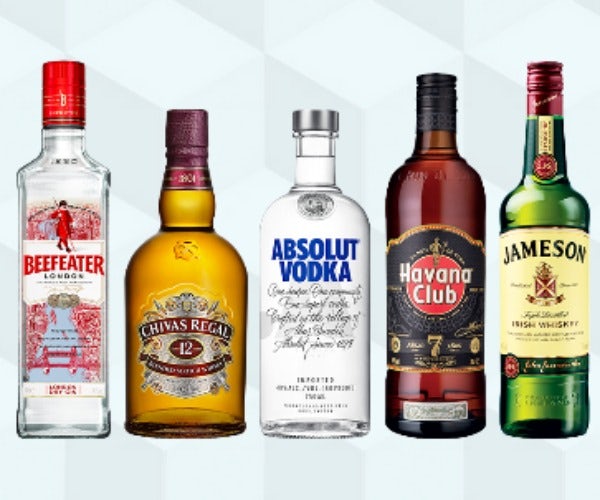A £14 KitKat? Premiumisation has gone too far
Nestlé is borrowing ideas from its Japanese business with the roll-out of its bespoke, hand-crafted KitKat, but with a £14 price tag surely the premiumisation trend has gone too far?

In times of global political uncertainty, when well-worn institutions are buckling under the pressure and every day is described as ‘unprecedented’, there is one thing you can be sure of – brands will make a play for premium.
From consumer goods and tech to food and drink, brands are sinking more investment than ever into beefing up their premium portfolios.
Take Gillette, which launched its premium division Gillette Labs in August, as it looks to tempt high-end consumers to part with £199 for a heated razor, which even the FMCG giant admits is “not for everyone”.
Meanwhile, Pernod Ricard said it would be ramping up investment across its super premium brands to capitalise on the ‘drink less but better’ trend earlier this month.
The confectionery industry is well ahead of the game when it comes to premiumisation. In March, Mars-owned Galaxy rolled out its Darker Milk chocolate as part of a wider three-year shift into the premium space. While Cadbury brought Darkmilk, its ‘chocolate for grown-ups’, to the UK in September last year.
Now Nestlé is upping the ante with its “luxury handcrafted” eight-finger custom KitKat.
Priced at £14 and available in 1,500 flavour combinations, the bespoke KitKats will be available to order via the Nestlé website or at pop-up shops within 30 John Lewis stores nationwide in the run up to Christmas.
Chocolate fans are asked to choose their base chocolate from either milk, dark, white or ruby – the pink-coloured chocolate derived from Ruby cocoa beans – and then select up to three flavours ranging from rose petals to popping candy and honeycomb.

While the bespoke bar is at the heart of KitKat’s Chocolatory premium range, there will also be the option to buy special edition bars.
Starting at £7.50, these smaller bars will come in a variety of flavours including gin and tonic, whisky and ginger and the intriguingly named ‘Springtime in Japan’. There will also be a Best of British range, exclusive to John Lewis, featuring flavours such as dandelion and burdock, Earl Grey and marmalade.
The roll out of KitKat Chocolatory to the UK marks Nestlé’s first foray into selling direct to consumers and, according to the brand, the biggest news for KitKat since the introduction of the Chunky some 20 years ago.
Nestlé is also learning from its Japanese business, where KitKat has a very different positioning compared to the UK and is proving a hotbed for product development. KitKat Ruby came to the UK in April 2018 after first being trialled in Japan and South Korea, followed in February this year by KitKat Matcha, which has been a success in the Japanese market for the past 15 years.
Since 2000, consumers in Japan have been able to choose from 300 KitKat flavours, which include such delights as purple potato and sake. These varieties were developed to tap into the country’s gift giving culture and are sold through Chocolatory boutiques.

The market is, of course, very different here in the UK where a standard four finger KitKat can be bought at any corner shop or supermarket for 70p.
Positioned as the perfect working day treat, the chocolate bar has been defined by its ‘Have a break, Have a KitKat’ tagline for decades. Not only is the Chocolatory collection a significant jump in price from 70p to £7.50 (never mind £14), but in the UK KitKats have never been seen as a gift, let alone a luxury.
Nestlé did try out a similar festive tie-up with John Lewis on its Quality Street brand last year. Shoppers could choose a minimum of three different sweets to fill their personalised tins, which ranged from £7.50 and £15. Yes, it was pricey, but at least Quality Street has been traditionally seen as a gifting brand in Britain. Not so the humble KitKat.
Galaxy aims to futureproof its brand with ‘step change’ in brand positioning
If Nestlé is serious about bringing a premium element to its KitKat portfolio on a permanent basis, perhaps it should take a leaf out of its rivals’ books. While the likes of Mars and Mondelēz are putting their weight behind premiumisation, they have prioritised affordability. Prices for bars of Galaxy Darker Milk and Cadbury Darkmilk start at £1.
Furthermore, whatever data Nestlé captures from its direct-to-consumer site is unlikely to prove useful when it comes to future product development. Consumers will primarily be gift givers looking for a novelty present who would be unlikely to splash out on a £7.50 apple and rhubarb crumble KitKat at any other time of the year.
This feels like a festive novelty collection crafted for Instagram, which will of course claim column inches and generate social media likes, but what place do luxury KitKats really have in the long-term strategy?
Premiumisation is not always the answer and what works in one very distinct market may not always be easily replicated in another. Furthermore, there is is nothing wrong with being a cheap and cheerful every day treat people have loved for decades. Other brands please take note.






